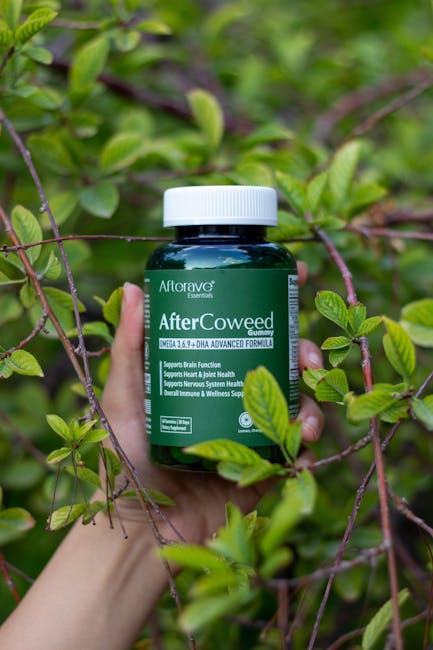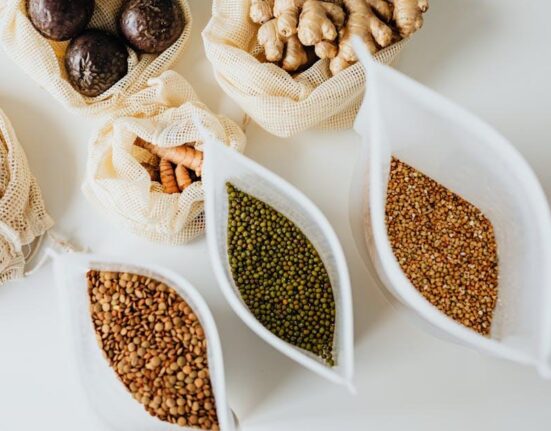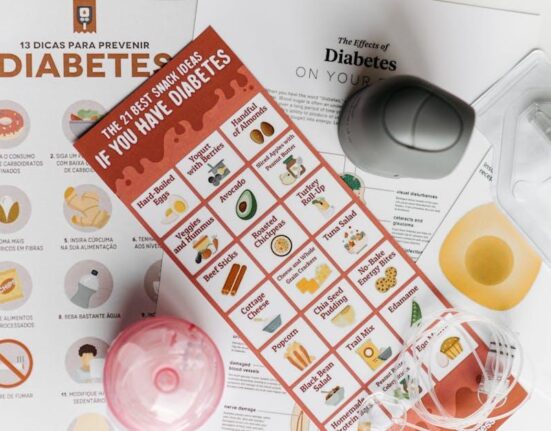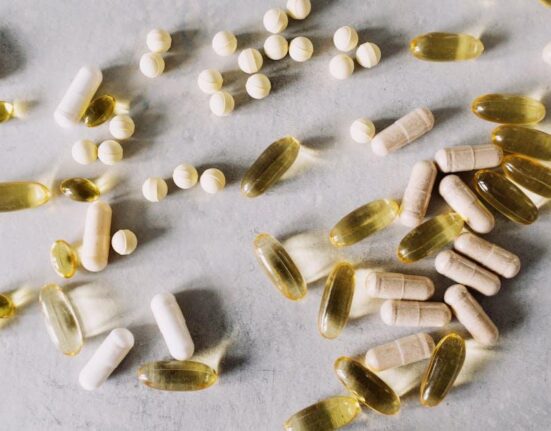In the intricate ecosystem of our body, the gut plays a starring role far beyond mere digestion. Like an unseen conductor, it orchestrates a symphony of health, influencing everything from immunity to mood. Yet, when the gut falters, the effects ripple silently but profoundly through daily life. Recognizing the subtle signs that your gut is on the mend can feel like deciphering a secret code written by your own body. This article ventures into that code, illuminating the meaningful signals that reveal your gut is healing — a quiet transformation paving the way to renewed well-being.
Table of Contents
- Indicators of Reduced Digestive Discomfort and Improved Bowel Movements
- Renewed Energy and Enhanced Nutrient Absorption
- Balanced Mental Wellbeing Linked to Gut Recovery
- Restored Immune Function and Decreased Inflammation
- Practical Tips to Support Continued Gut Health Progress
- Q&A
- Insights and Conclusions

Indicators of Reduced Digestive Discomfort and Improved Bowel Movements
One of the most encouraging signs that your digestive system is on the mend is a noticeable decrease in bloating, cramps, and general discomfort. You may find that meals no longer leave you feeling sluggish or heavy, and the dreaded post-eating reflux or heartburn has become less frequent or disappeared altogether. Improved gut motility also means you’re less likely to experience gas buildup or irregular stomach noises, signaling your intestines are processing food more efficiently.
Regular, well-formed bowel movements are a clear indicator of restored balance within your gut. Pay attention to the consistency, frequency, and ease of passing stools—as these are key clues to digestive well-being. The following table outlines common improvements you might observe:
| Indicator | What to Expect |
|---|---|
| Frequency | Daily or every other day, without urgency |
| Consistency | Soft, formed stools that are easy to pass |
| Absence of Pain | No straining, cramping, or discomfort |
| Reduced Gas | Minimal bloating or flatulence |
Embracing these changes means your gut flora is thriving and your digestive lining is healing. Together, these improvements set the stage for a healthier, more vibrant you.

Renewed Energy and Enhanced Nutrient Absorption
Feeling a surge of vitality is often a clear indicator that your digestive system is bouncing back. When your gut lining starts to repair itself, it no longer acts as a barrier to essential nutrients, allowing your body to absorb vitamins, minerals, and minerals with greater efficiency. This boost in nutrient uptake commonly translates to improved energy levels and an overall sense of well-being.
Some key benefits to notice as this process unfolds include:
- Sharper mental clarity – nutrients like B vitamins and magnesium fuel brain function more effectively.
- Steadier energy throughout the day – no more sudden crashes or fatigue.
- Enhanced immune support – a healed gut promotes a balanced microbiome, which plays a critical role in defending against illness.
| Symptom Improved | Result |
|---|---|
| Fatigue | Boosted stamina |
| Brain Fog | Clearer focus |
| Immune Weakness | Stronger defenses |

Balanced Mental Wellbeing Linked to Gut Recovery
Emerging research highlights a profound connection between the health of your gut and your mental wellbeing. When your digestive system starts to recover, you may notice subtle shifts in your mood and cognitive function. This is because a balanced gut flora supports the production of neurotransmitters like serotonin, often called the “happy chemical,” which predominantly originates in the gut. As the gut heals, you might experience improved sleep patterns, reduced anxiety, and clearer thinking, indicating a rebalance in your body’s internal ecosystem.
Pay attention to the following signs that suggest your mind and gut are in harmony:
- Calmer Stress Response: Feeling less overwhelmed in daily situations.
- Enhanced Mood Stability: Fewer mood swings or sudden emotional changes.
- Sharper Concentration: Improved focus and mental clarity throughout the day.
| Mental Wellbeing Indicator | Gut Healing Sign | Potential Benefit |
|---|---|---|
| Reduced Irritability | Lowered gut inflammation | Improved interpersonal relationships |
| Better Sleep Quality | Balanced microflora | Higher daytime energy |
| Decreased Brain Fog | Strengthened gut lining | Enhanced productivity |

Restored Immune Function and Decreased Inflammation
When your gut starts to heal, it sends powerful signals throughout your entire body — one of the most noticeable being a revitalized immune system. A healthy gut nurtures beneficial bacteria that play a crucial role in training and modulating your immune responses. As this balance is restored, your body becomes more efficient at defending against pathogens while avoiding unnecessary attacks on itself, reducing the frequency of infections and allergic reactions.
Alongside immune rejuvenation, the inflammation that once plagued your digestive tract begins to recede. This calming effect extends beyond your gut lining, often resulting in reduced joint pain, clearer skin, and improved energy levels. You might experience:
- Less bloating and discomfort
- Fewer flare-ups of autoimmune symptoms
- Smoother digestion and absorption of nutrients
- Overall decreased systemic inflammation markers
| Inflammatory Marker | Before Gut Healing | After Gut Healing |
|---|---|---|
| C-Reactive Protein (CRP) | 8.5 mg/L | 2.1 mg/L |
| Interleukin-6 (IL-6) | 15 pg/mL | 6 pg/mL |

Practical Tips to Support Continued Gut Health Progress
Maintaining momentum in your gut healing journey requires consistent, mindful practices that nourish your digestive system. Start by incorporating diverse, fiber-rich foods like leafy greens, berries, and legumes to feed the beneficial bacteria that help maintain a balanced microbiome. Remember, hydration plays an equally pivotal role—aim for plenty of water throughout the day to support digestion and toxin elimination. Additionally, consider integrating fermented foods such as kimchi, sauerkraut, or kefir to naturally boost probiotic levels.
Supporting your progress also means cultivating habits that mitigate inflammation and stress, both of which can impede gut recovery. Prioritize restorative sleep and engage in gentle physical activity, like yoga or walking, to keep your system in harmony. Here’s a quick guide to practical actions you can weave into your routine:
- Eat mindfully: Chew slowly to enhance nutrient absorption.
- Limit irritants: Reduce caffeine, processed sugars, and alcohol intake.
- Manage stress: Practice meditation, breathing exercises, or journaling.
- Supplement wisely: Use probiotics or digestive enzymes under professional guidance.
| Action | Benefit |
|---|---|
| Fiber-rich Diet | Enhances gut flora diversity |
| Fermented Foods | Boosts probiotic count |
| Hydration | Supports digestion and detoxification |
| Stress Management | Reduces gut inflammation |
Q&A
Q: How do I know if my gut is healing?
A: Healing guts often whisper rather than shout. Look for subtle shifts: reduced bloating, fewer tummy aches, and smoother digestion. If you’re feeling less sluggish after meals and notice more regular bathroom visits, your gut may be on the mend.
Q: Can improved energy levels indicate gut healing?
A: Absolutely. Your gut is a key player in nutrient absorption and metabolism. When it starts functioning better, your body gets more of what it needs, often resulting in a gentle boost in energy and mental clarity.
Q: Is a decrease in food sensitivities a sign of gut repair?
A: Yes, that’s a promising sign. When your gut lining strengthens and inflammation calms, you may find that foods that once caused distress no longer upset your system, signaling a healthier intestinal environment.
Q: What about changes in mood or mental health—is that connected?
A: There’s a fascinating link between gut and brain, often called the gut-brain axis. Improvements in digestion can sometimes mirror better mood or reduced anxiety, as gut healing helps regulate the production of important neurotransmitters.
Q: Should I notice changes in my skin if my gut is healing?
A: Many do. Skin is often a reflection of internal health. Less gut inflammation and better nutrient uptake can lead to a clearer, more vibrant complexion—think of it as your body’s thank-you card.
Q: How soon can these signs appear?
A: Patience is key. Healing times vary: some feel better within days or weeks, while for others, it can take months. Consistency in gut-friendly habits usually brings steady improvements.
Q: Can I rely solely on symptoms to gauge gut health?
A: Symptoms give valuable clues but don’t tell the whole story. For deeper insights, consider consulting healthcare professionals who may recommend tests or personalized strategies to support your healing journey.
Q: What common misinterpretations should I avoid?
A: Avoid assuming that a lack of symptoms means your gut is perfectly healthy; some issues are silent. Conversely, occasional digestive quirks don’t always mean damage. Context and patterns matter more than isolated moments.
Q: What lifestyle changes best support gut healing?
A: Embrace whole foods rich in fiber, stay hydrated, manage stress mindfully, and get restful sleep. Probiotics and fermented foods may help, but tailoring your approach to your body’s feedback is essential.
Q: Can gut healing influence overall health beyond digestion?
A: Indeed. A healthy gut supports immunity, hormonal balance, and even cognitive function. Healing your gut is like tuning an orchestra—when it plays in harmony, the entire body benefits.
Insights and Conclusions
As your body quietly orchestrates the intricate process of healing within, the subtle signs of a mending gut begin to surface—whispers of wellness that tell a story of restoration. From renewed energy to calmer digestion, these clues invite you to acknowledge the progress beneath the surface. Healing is not always dramatic, but its gentle emergence is a testament to resilience. By tuning into these signals, you not only celebrate your gut’s recovery but also embrace a journey toward lasting health and balance.













Leave feedback about this